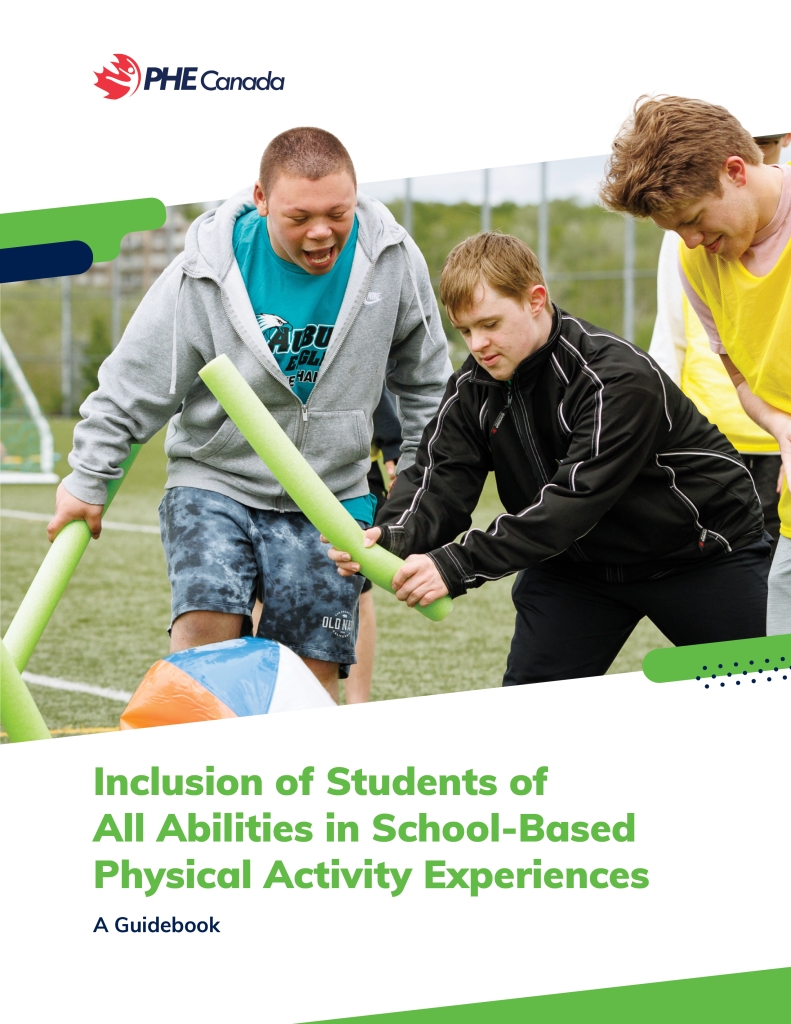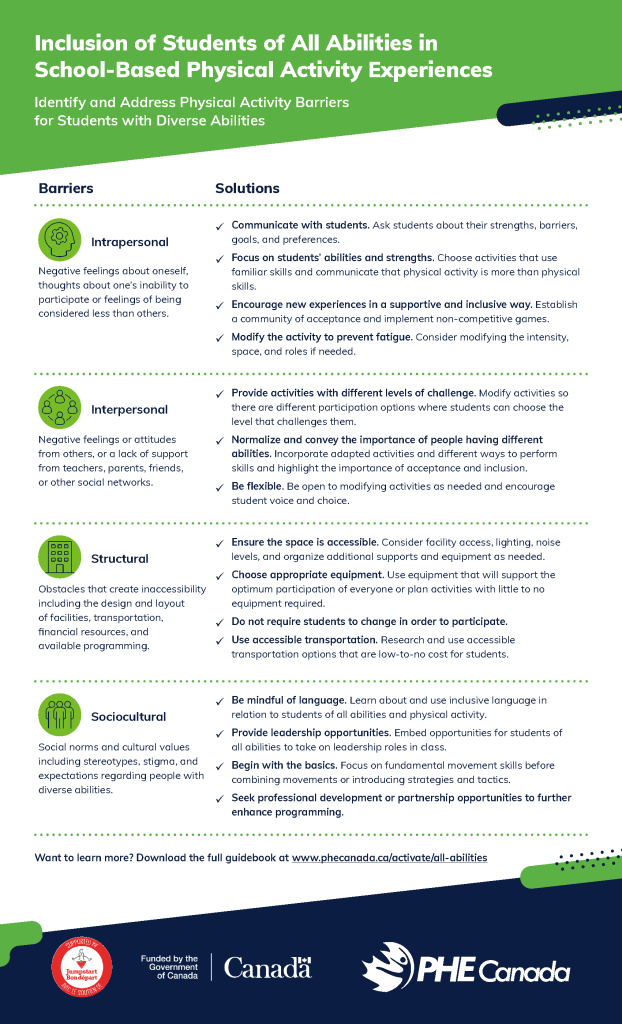Students with diverse abilities face various interpersonal, intrapersonal, structural, and sociocultural barriers to participation when seeking to engage in physical activity experiences. Understanding what the barriers are is the first step to creating change in your physical activity program.
Interpersonal Barriers
An interpersonal barrier to participation can include negative feelings or attitudes from other students, teachers, or parents/guardians about an individual’s ability to participate in physical activity (Pinello, 2020).
Some interpersonal barriers include:
-
Focusing on a person’s disability and assuming assume a student with a disability would prefer to not perform an activity solely based on them having a disability
-
Oversimplifying and lack of challenge as educators may plan activities that lack complexity and challenge for students of all abilities
-
Shaming, stigmatizing, or bullying if other students complain about having to participate in the same activities as students with diverse abilities
-
Peers or educators may lack knowledge and experience in planning or participating in physical activity programming with students of all abilities
Intrapersonal Barriers
Intrapersonal barriers to participation can include negative feelings about oneself and one’s body, thoughts about one’s inability to participate in physical activity, or feelings of being considered less than others. It can result in discouragement and fear of participating in physical activity (Moore & Phelan, 2021).
Some intrapersonal barriers include:
-
Self-confidence due to their disability and feel different from their peers
-
Embarrassment as students may require extra time to perform tasks or to understand the task
-
Anxiety about participating in physical activity due to past negative experiences
-
Fatigue or decreased stamina, as some students of all abilities experience increased fatigue compared to other students, so they may not be able to participate in the same duration or intensity of physical activity as their peers
Structural Barriers
Structural barriers refer to obstacles that collectively affect a group of people that perpetuate and maintain the inaccessibility of physical activity participation (Simms et al., 2015).
Some structural barriers include...
-
Cost of adapted programming and equipment can be hard for schools to provide due to funding
-
Physical barriers such as curbs or uneven surfaces in schools can be limiting to some students’ physical activity experiences
-
Lack of appropriate changing facilities as some students may require extra space and help when changing
-
If transportation is required, financial requirements or inadequate accessible options for transportation may be a barrier
Sociocultural Barriers
Sociocultural barriers refer to societal constructs that originate from social norms and cultural values (Gyurcsik et al., 2006).
Some sociocultural barriers include:
-
Lack of cultural respect and inclusive language by using inappropriate language describing an individual with a disability
-
Ability segregation, when separating students of all abilities during physical activity programming
-
Lack of leadership opportunities for students of all abilities in physical activity programming
-
Inexperience in physical activity environments, in which students with diverse abilities are less likely to have participated in physical activity earlier in life compared to others, due to their disability
To learn more about how you can support students with a disability in your school community and enhance the inclusivity and accessibility of your everyday physical activity programming, download our Inclusion of Students of All Abilities in School-Based Physical Activity Experiences: Guidebook and Poster for free.
 |
 |
| Download Guidebook | Download Poster |
